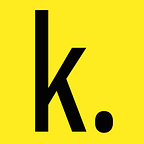How do we know if the Internet is ‘working’?
UNESCO wants the public’s help mapping the early promise versus reality of the internet
In the early 1990s, Delhi-based author Nilanjana Roy explored the internet as if it were a desert, traversing a vast, flat terrain that let her cross borders — both digital and political — uninterrupted.
She and her fellow digital pioneers “had exceptional freedom, tasted the dangerous pleasures of a world beyond the idea of nationhood, and took it all for granted,” Roy wrote in a 2016 column for the Financial Times. “Conversations with Burmese dissidents, Iranian bloggers and US LGBT activists gave me a crash course in what truly free speech (and its absence) might feel like.”
Things weren’t perfect — trolls, doxxers and explicitly violent content have existed since internet-time immemorial — but at least it was egalitarian and non-hierarchical, Roy wrote.
Users weren’t beholden to the algorithms of a few corporate behemoths such as Google and Facebook. And they weren’t subjected to vastly different experiences depending on what country they lived in, as national differences in infrastructure, regulation and access hadn’t yet evolved.
Roy’s essay points to a general agreement that global governance of the internet is in turmoil. The rise of peer-to-peer networking, cryptocurrencies and other blockchain technologies are further proof that many are asking the same question: how can users reclaim the democratic ideals that gave way to the internet in the first place?
UNESCO, the United Nations body responsible for promoting international cooperation and access to education, science, culture and free expression, is trying to address this issue at the national level. To do so they’re starting with a fundamental question: what will the internet look like if it’s working?
And for that they want our help.
From now until March 15, UNESCO is soliciting public input on what it calls “internet universality indicators” — in other words, indicators that the internet is working the way it was originally supposed to: in service of the public good.
The internet should “enable rights, empower individuals and communities, and facilitate sustainable development,” according to UNESCO. The organization has synthesized universality into a neat little acronym: ROAM. The internet should be based on human rights (R), open (O), accessible to all (A), and nurtured by multi-stakeholder participation (M).
The universality indicators are divided into each of these four ROAM categories: rights-based indicators, openness indicators, and so on. Each category is then analyzed thematically, taking into account the legal and regulatory framework, freedom of expression, access to information, association and participation, privacy, and economic and cultural rights.
A draft version of the indicators was released at the end of 2017. Now the public has one more month to review and provide feedback on the UN’s draft metrics to “assess and improve” the internet.
UNESCO has vowed to pay special attention to gender issues and the internet’s impact on children and young people, and is seeking input on specific issues such as press freedom and cyber law through open panels at specialized events.
Once the indicators are finalized this spring, national governments and other stakeholders will be asked to assess their internet environments based on the principles established. The framework will serve as a follow-up to a set of guidelines released in 2008 that dealt with media, democracy and development more broadly.
The internet universality indicators, which were first conceived of in 2013, will be the first to deal with the internet specifically.
Access UNESCO’s online indicators evaluation form here.
Sign up to receive Kheiro Magazine straight to your inbox.
